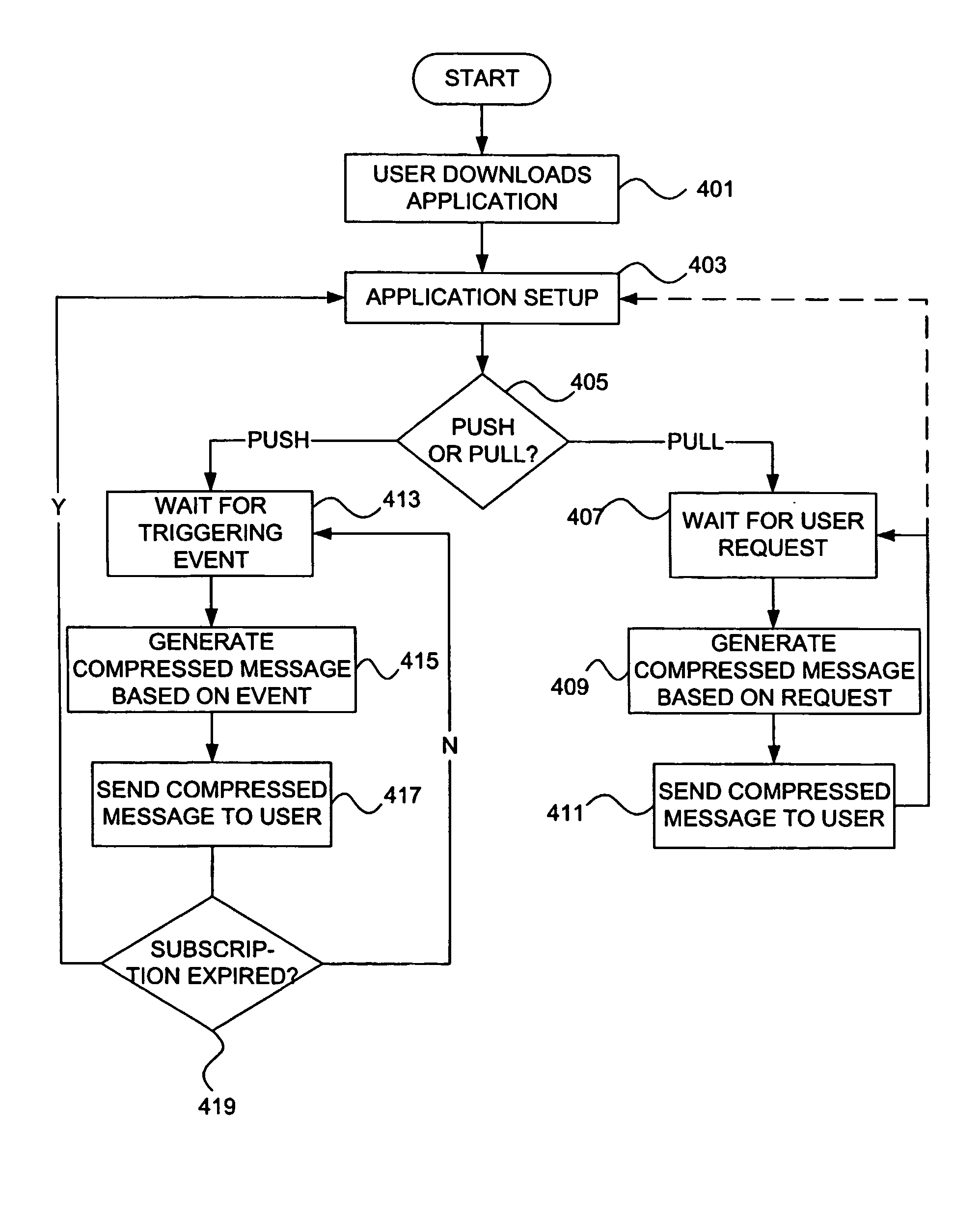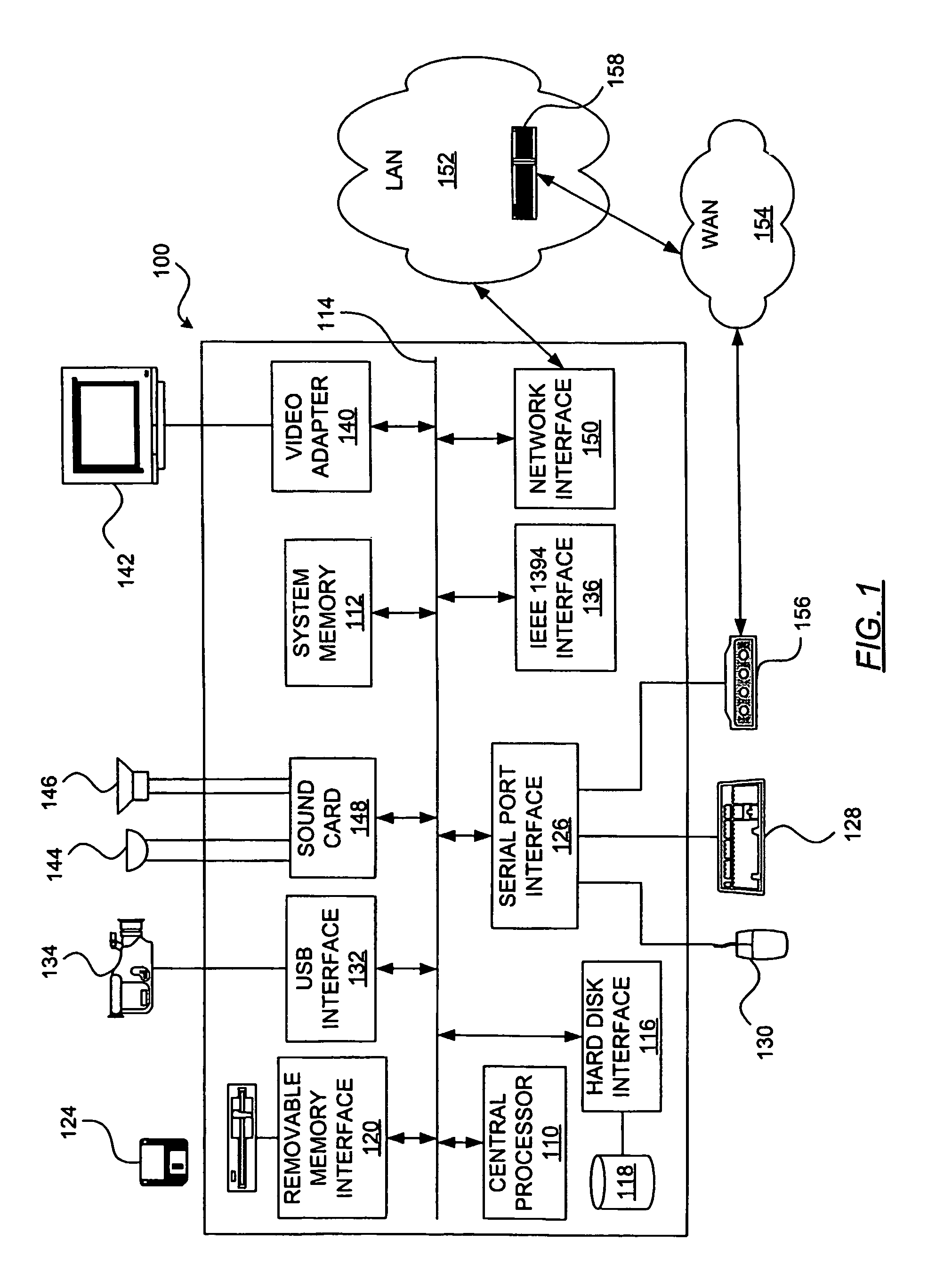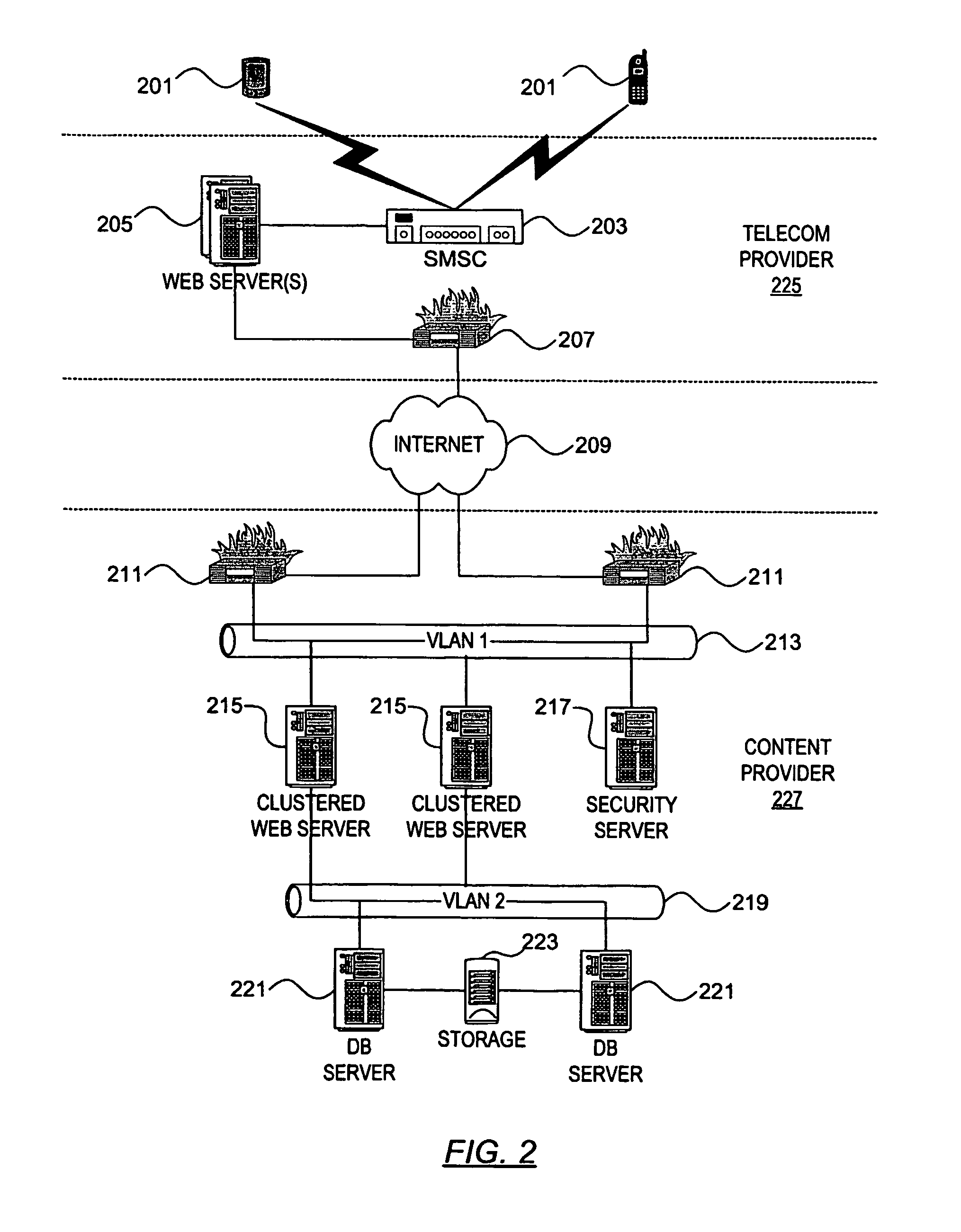Mobile micro-band information distribution
a micro-band information and mobile technology, applied in the field of mobile telecommunications and information delivery, can solve the problems of deteriorating service quality (i.e. available bandwidth per user), consuming quickly available bandwidth, etc., and achieve the effect of reducing overhead and required bandwidth per messag
- Summary
- Abstract
- Description
- Claims
- Application Information
AI Technical Summary
Benefits of technology
Problems solved by technology
Method used
Image
Examples
Embodiment Construction
[0025]In the following description of the various embodiments, reference is made to the accompanying drawings, which form a part hereof, and in which is shown by way of illustration various embodiments in which the invention may be practiced. It is to be understood that other embodiments may be utilized and structural and functional modifications may be made without departing from the scope of the present invention.
[0026]In order to provide information to users, using only limited bandwidth, on a mass scale, aspects of the invention provide for the coding and decoding of messages to send to a user, where the message is not dependant on a synchronous data connection. An application program running on each mobile terminal can code and send request messages, and receive and decode the response messages to provide information to an end user. One or more aspects of the invention may be embodied in one or more computers and computer systems, such as is illustrated in FIG. 1. In FIG. 1, co...
PUM
 Login to View More
Login to View More Abstract
Description
Claims
Application Information
 Login to View More
Login to View More - R&D
- Intellectual Property
- Life Sciences
- Materials
- Tech Scout
- Unparalleled Data Quality
- Higher Quality Content
- 60% Fewer Hallucinations
Browse by: Latest US Patents, China's latest patents, Technical Efficacy Thesaurus, Application Domain, Technology Topic, Popular Technical Reports.
© 2025 PatSnap. All rights reserved.Legal|Privacy policy|Modern Slavery Act Transparency Statement|Sitemap|About US| Contact US: help@patsnap.com



